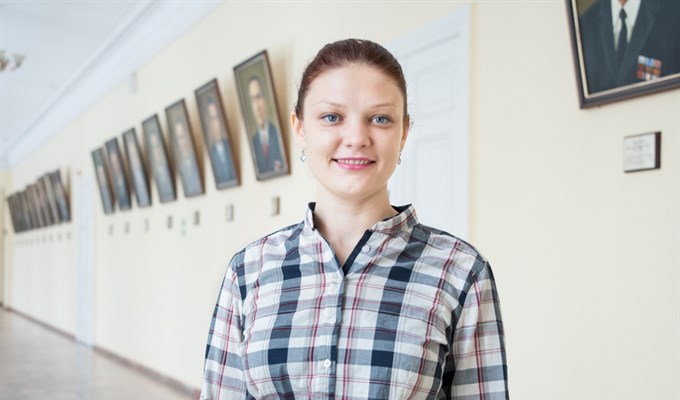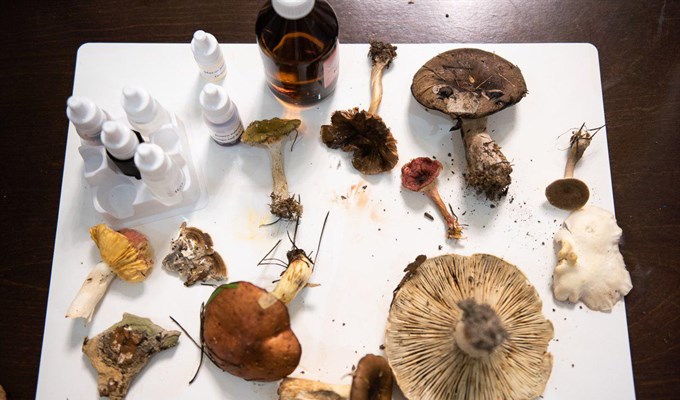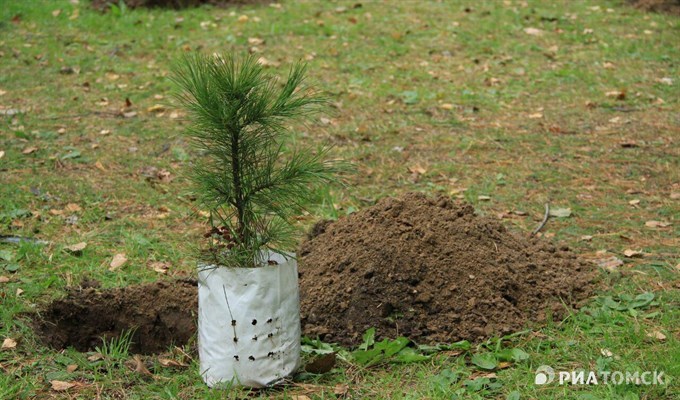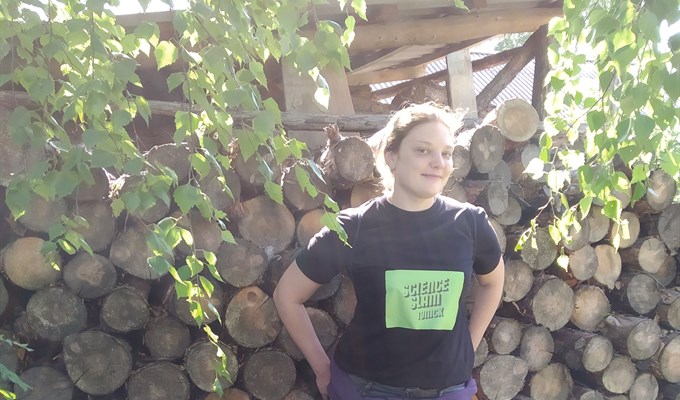TOMSK, Sep 25 – RIA Tomsk, Elena Taylasheva. Trees and fungi - is one of the most ancient symbiosis, they are "woven" underground and will not survive without each other. In order to study this union TSU postgraduate Ksenia Karbysheva changed international relations to ecology. How all this will help apple or cherry seedlings in your garden - in the RIA Tomsk material.
"I know you"
"I love honey. I put a bee on my tongue, eat something (and feed it), and she gives me honey directly into my mouth", - Ksenia Karbysheva, postgraduate student of the Biological Institute of TSU, describes the phenomenon she is studying - symbiotic associations of mushrooms and conifers (mycorrhiza). And admiringly adds:
"This is unrealistically cool! Two completely different organisms in such a close and harmonious interaction ...".
The association between trees and fungi - is one of the most ancient forms of "cooperation" in nature (considering that conifers are generally one of the first forms of terrestrial vegetation). They existed together for a long time and in the end they "figured out" how to help each other survive.
© предоставила Ксения Карбышева
“When the root of a tree grows, it releases signaling molecules that “attract” the mycelium. The mycelium braids the root, penetrates under the cap and spreads in the inner tissues of the root. This is how a symbiotic structure is formed - mycorrhiza, from which everyone gets a profit”.
“Look: plants consume minerals only in dissolved form. What is in the water solution in the soil, they can “eat”. And this is often not enough ... Mushrooms have a different biochemistry: they are able to dissolve minerals themselves and consume them from the soil. Combining with a tree, the mushroom takes over the function of extracting nutrients and supplies them to the "partner" through the root.
In addition, during the formation of mycorrhiza, the tree's immunity is strengthened: when the mycelium penetrates the root, the tree begins an immune response - it senses a foreign body. But recognizing its old neighbor, it calms down, having managed to get a sort of vaccination at the same time", - explains Ksenia Karbysheva.
Ksenia Karbysheva often talks about her research at Science Slam scientific tournaments. In 2018, she won the intellectual battle between Russia, the United States and Germany.
The interest of mushrooms is that they also receive exclusive nutrition underground: the organic carbon formed in the process of photosynthesis, the tree directs for nutrition to all its organs, including the roots.
"Certain types of mushrooms and certain types of trees enter into associations (it is not for nothing that Aspen mushroom grows under an aspen, and birch boletus grows under a birch). Thanks to our research, it has become more clear who lives in the Tomsk forests, which of the mushrooms is most suitable for the role of a promising partner for conifers (we study them).
If we find such a mushroom, then on the basis of its mycelium we can create a drug that will help the tree "survive" transplantation in a nursery, in a garden, during planting and reforestation work - in general, in any conditions when it is forced to adapt to a new environment. That is, this is fundamental research, but with a very clear practical result", - notes the scientist.
Continuous discoveries
Ksenia loved to understand how and why plants grow since childhood. But in high school she became interested in foreign languages and decided to enter international relations at Tomsk State University.
“I am from Ulan-Ude, it’s relevant there - the border (with Mongolia) is near. I chose Tomsk because I was attracted by the image of TSU as a center of Siberian science. I have never regretted the choice! Moreover, I did not go far from my favorite topic - my coursework and diploma were related to ecology (I studied international environmental legislation, the impact of climate change on politics and economics)", - recalls Karbysheva.
© предоставила Ксения Карбышева
When Ksenia's son was born, she and her friends organized a group of "mutual nursery". Karbysheva was responsible for natural sciences: "How to show the size of the microbes? We tore the paper, chose the smallest piece of paper, and I said: "And the microbe is even smaller!".
After receiving her diploma, she worked for some time in her specialty in the department of foreign economic relations of a Tomsk enterprise, then taught English, but all the time she was drawn to biology ...
“As a result, I entered the master's degree program at the Biological Institute. I said that I needed a topic where there is more biology and less chemistry (relations with it never formed), and I was allowed to study the symbiosis of legumes and symbiotic nitrogen-fixing bacteria.
There is such an agricultural crop - chickpea, which is very popular, and there are bacteria that, in symbiosis with this plant, fix nitrogen from the air. If a microbiological preparation is made on their basis, then nitrogen fertilizers for growing this crop are needed much less (to understand: to produce 1 ton of nitrogen, 4.5 thousand kilowatts of electricity are needed)", - tells Ksenia Karbysheva.
In postgraduate school she got to Olga Borisovna Vaishlya, a scientist-mycologist. The topic of mushrooms came almost by accident - there was a grant and, accordingly, good funding.
"At the same time, the symbiosis of mushrooms with cedar (Siberian pine), which occupies most of Siberia, has not been studied by anyone, so anything you can do about this topic will be a discovery. During the research, I discovered 67 potentially interesting species of mushrooms in the Tomsk region that can help the cedar", - says Ksenia Karbysheva.
© предоставлено пресс-службой Томского госуниверситета
To make a preparation for the care of plants using a special technique, a small piece of the mushroom is separated and planted on a nutrient medium. Further, the mycelium grown in this way is studied, its conformity, purity is confirmed - and its scaling begins.
Save trees
The scientist investigated two cedar forests - Loskutovo and Zorkaltsevo, as well as a pine forest in Timiryazevo (there is now actively forming cedar undergrowth). From May to October she went tens of kilometers through the forests, collecting samples. In the fall, work began in the laboratory: very thin sections of the roots were made using special equipment, the width of the mushroom cover was measured, the number of cells in the root was counted ...
"I clearly saw: the trees in Zorkaltsevo are bad. Their mycorrhiza showed the same parameters as the trees, which are either shaded or overwhelmed by something, and the flow of carbonaceous substances to the roots is blocked. One of the probable reasons may be that cedars in Zorkaltsevo grow very densely.
But in Loskutovo, both mature trees and young growth have very good indicators. We found there the largest number of mushroom species that enter into symbiosis with cedar. In Zorkaltsevo there are much fewer of them, in Timiryazevo there are even fewer", - says Ksenia.
© РИА Томск. Павел Стефанский
The cedar has a high specialization - it forms mycorrhiza only with specific mushrooms. Its favorite - is the Suillus sibiricus.
Based on these studies, her Candidate's dissertation has already been written, and Ksenia is preparing to defend it. In practice, the research of her and her colleagues is used in the university company "Mikobaks", which produces "live" microbiological preparations, including those based on the mycelium of fungi. They stimulate the growth of various plants, from seedlings to garden trees such as apple and cherry. Ksenia is responsible for product promotion.
"For the first time in six years, I have not been collecting samples and, frankly speaking, it teases me - I really want to cut something! I do not exclude that I will return to science: there are still a lot of blank spots in my topic", - smiles she.
© предоставила Ксения Карбышева
"Over the years of research I realized that the forest - is an invaluable gift. Have you ever seen how cedars sprout? In a heap of 10-15 pieces. Only one, the strongest, survives. Its genetic material is unique, therefore every cut tree - is a crime", - considers Ksenia.